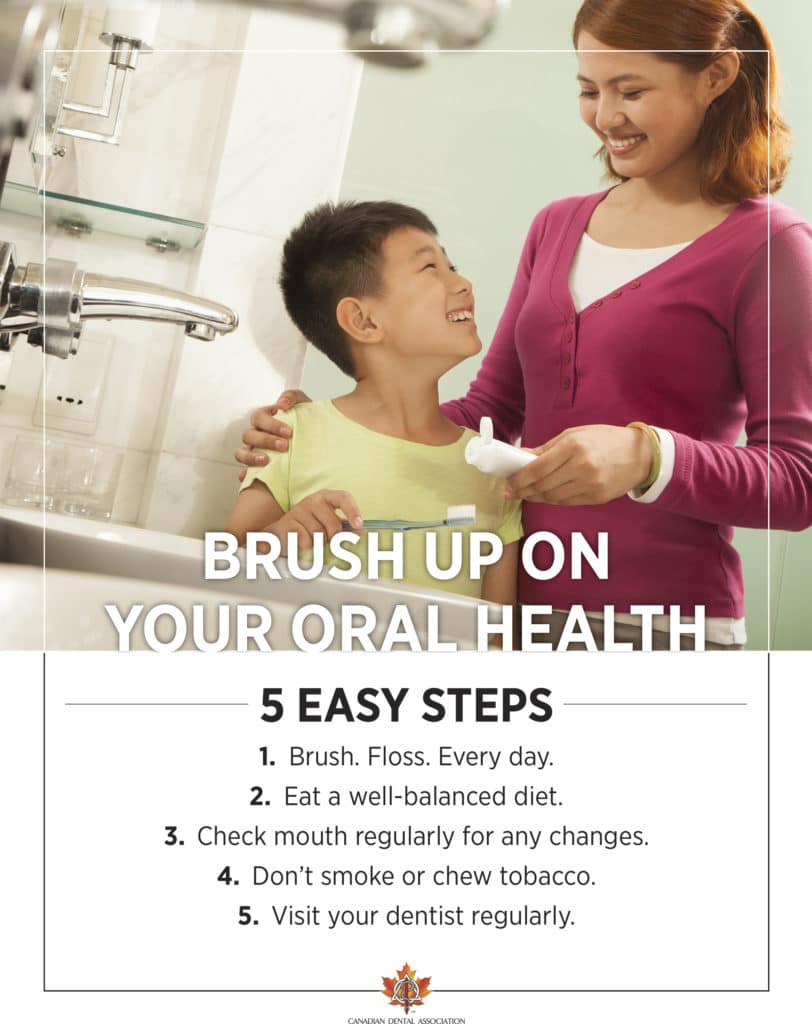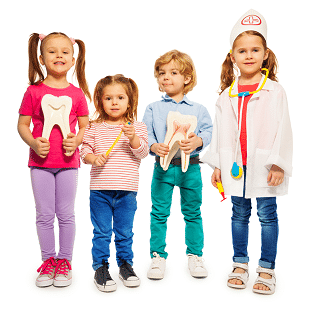 Here are 3 reasons to take your child for dental exams:
Here are 3 reasons to take your child for dental exams:
- You can find out if the cleaning you do at home is working.
- A screening can find problems early.
- Your child can learn that going to the dentist helps prevent problems.
Children ages 3–6: Help your young children to brush their teeth twice a day, using a pea-sized amount of fluoride toothpaste. Show them how to brush every tooth surface and their tongue, and make sure that they spit out the toothpaste when they are done.
Once your child has permanent molars, your dental provider may suggest sealing them to protect them from cavities. A sealant is a kind of plastic that is put on the chewing surface of the molars. The plastic seals the tooth and makes it less likely to trap food and germs. For more information, click here.
Children ages 6‒13: Encourage them to begin flossing once a day, in addition to brushing twice a day for two minutes with fluoride toothpaste. Help children to make healthy food choices, avoiding sweets and sugars. Have them fitted for a sports mouthguard to be worn during athletic activity. Teenagers: Remind them to brush their teeth at least twice a day with fluoride.
The dentist says my child needs a filling in a baby tooth. Since the tooth is going to fall out, why bother?
Some primary (or baby) teeth will be in your child’s mouth until age 12. The tooth that needs to be fixed may be one of those.
Broken teeth or teeth that are infected can hurt your child’s health and the way your child feels about him or herself.
To do a filling, the dentist removes the decay and “fills” the hole. A filling can be a cheap and easy way to fix a problem that could be painful and cost more later because it stops decay from spreading deeper into the tooth.
If a filling is not done and decay spreads, the tooth may need to be pulled out.
When a baby (or primary) tooth is missing, the teeth on each side may move into the space. They can block the permanent tooth from coming in.
CK Public Health offers free dental screening in all schools.
Elementary school screenings
Registered Dental Hygienists from CK Public Health provide a free dental screening to kindergarten and Grade 2 students in elementary schools throughout the year to identify oral health problems. Each school schedules its own time and date for the visit. The Ontario Public Health Standards require health units to conduct this screening annually to identify children who are in need of dental treatment.

Why do we screen these kids?
Children in kindergarten may not have seen a dental care provider before. This screening ensures all kids get that first visit.
Children in Grade 2 have their first permanent molar (back) teeth. This screening can help identify and prevent decay.
What happens during the oral health screening?
The Registered Dental Hygienist will take a quick look in your child’s mouth with a sterilized mirror. A dental screening is a visual assessment only and does not replace your child’s regular dental visit with a dental provider.
How will I know if my child will be screened?
You’ll be notified at least two weeks before CK Public Health visits your child’s school. You will be notified by:
- Letter sent home with your child.
- Announcement on the school’s website or calendar
If emergency care is needed
A screening can also help identify if your child needs emergency treatment. A note will be sent home with your child the day of the screening and a Parent Notification will be mailed home. You must complete and return the Parent Notification to CK Public Health as we are obligated to ensure it’s completed.
Opting Out
You can opt out of the screening, if you don’t want your child/children to participate. Call CK Public Health at 519-355-1071 ext. 5700. Make sure to opt out as soon as you get the notification. You must call every year to opt out.
